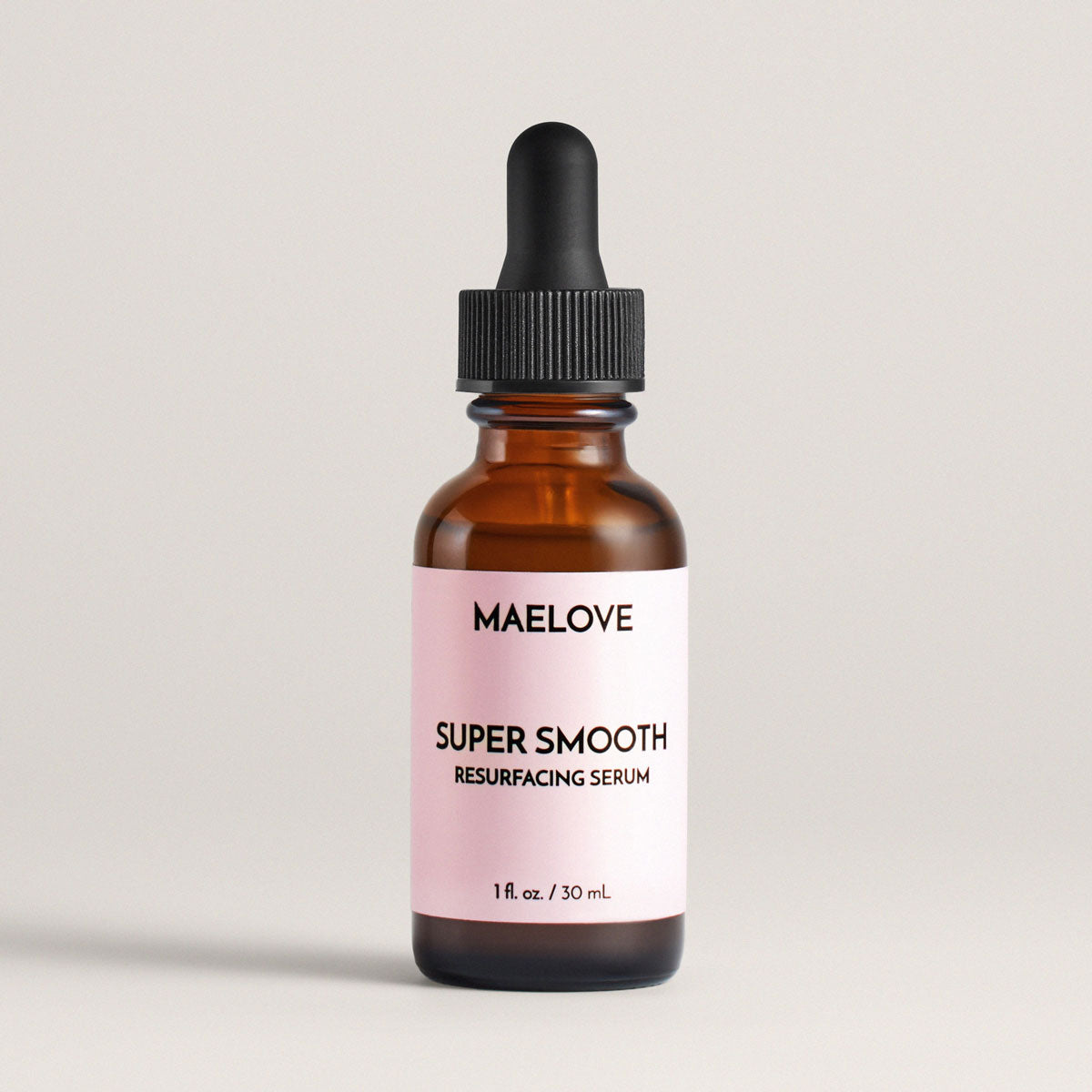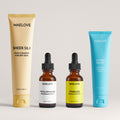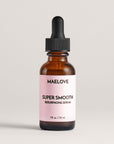

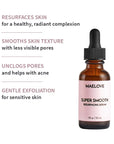
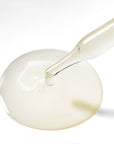
1100+ purchased in the last 30 days
Super Smooth AHA + BHA Resurfacing Serum
- Smooths skin texture
- Gently exfoliates
- Unclogs pores
- Lactic acid
- Glycolic acid
- Tartaric acid
- Salicylic acid
- Perfection Peptide P3
Most orders are processed and shipped within two business days (Mon - Fri). You’ll receive an email with tracking details as soon as yours is on its way.
For US-based shoppers, shipping is on us for orders $50 and over. Anything less is a flat $6.95 charge.
100-Day Peace of Mind: Skincare is a journey, and we're with you. You have a full 100 days to try your products. If you aren't satisfied, returns are free and easy through our self-serve portal or a quick note to team@maelove.com
With consistent use, results build gradually and predictably.
Within the first week:
Skin feels noticeably smoother and more hydrated. Many people notice that soft, “freshly moisturized” feel when cleansing or rinsing in the morning.
Weeks 2–3:
Texture continues to refine. Makeup applies more evenly as rough patches soften, and skin starts to look clearer and more even-toned. It’s a subtle but steady shift that makes skin look more rested and awake.
Week 4 and beyond:
More visible improvements in overall texture, pore appearance, and fine surface lines typically emerge with continued use.


Dermatologists and customers love Super Smooth because it delivers effective exfoliation while being extra-gentle.
PEPTIDE TECHNOLOGY (Perfection Peptide P3 - Hexanoyl Dipeptide-3 Norleucine Acetate)
- Unlike traditional acids that just attack the surface, this peptide first helps gently loosen the "sticky" dead skin cells. This makes exfoliation safer and ensures your skin remains comfortable.
THE MULTI-ACID BLEND (alpha & beta hydroxy acids)
- We use Lactic, Glycolic, Tartaric, and Salicylic Acids to cover every surface.
- The AHAs handle the rough skin, and the BHA clears oil and congestion deep inside the pore.
THE SOOTHING BUFFER (Argan Oil, Resveratrol, Hyaluronic Acid)
- This soothing blend balances the acids and ensures you get high efficacy without the redness or burning often associated with peels.
full ingredient list in FAQ
For AM and/or PM. Apply a thin layer of serum to the face, neck, and chest. Massage product in until it is fully absorbed. Follow with a gentle moisturizer to lock in the serum (AM & PM) and an SPF to block UV-damage (AM).
Start slow – use 2-3x a week, slowly ramping up to daily use and layering as tolerated.
Layer your products from thinnest to thickest in texture, waiting a full minute between each product.
See our How to Layer guide for tips on layering multiple Maelove products.




Customer Reviews
For the Curious
All Maelove products are tested for sensitive skin, made in the US, vegan, cruelty-free, non-comedogenic, gluten-free, and free of parabens, phthalates, dyes, and artificial fragrances. We don't use ingredients that are banned in the EU or in the USA.
Aqua (Water), Glycerin, Pentylene Glycol, Propanediol, Lactic Acid, Glycolic Acid, Aloe Barbadensis Leaf Juice Powder, Argania Spinosa Kernel Oil, Tartaric Acid, Vitis Vinifera (Grape) Seed Extract, Sodium Hyaluronate, Pichia/Resveratrol Ferment Extract, Salicylic Acid, Camellia Sinensis (White Tea) Leaf Extract, Xanthan Gum, Dimethyl Isosorbide, Potassium Sorbate, Sodium Gluconate, Hexanoyl Dipeptide-3 Norleucine Acetate, Lecithin, Ethylhexylglycerin, Sodium Hydroxide, Phenoxyethanol, Citric Acid
Skin renewal and natural exfoliation can weaken for many reasons. For example, those who struggle with acne or dry skin have less natural exfoliation and often benefit from hydroxy acids. However, at some point, everyone will experience the weakening of these natural processes in the course of aging.
In young adults, the top epidermal layer of the skin entirely renews itself every 28 days, while this process takes 40 to 60 days in more mature skin. This means dead skin cells accumulate longer on the surface of older skin making the skin look rough and scaly, the pores look enlarged, and the complexion look dull (Rodan et al. 2016). Regular removal of dead skin smooths out skin and evens out skin tone while encouraging quicker renewal of the epidermis by the deeper underlying skin cells - helping to mimic the process in younger skin (Kornhauser et al. 2010).
This weakening of natural exfoliation with age is in part because the cohesion between dead skin cells increases in older adults. Perfection Peptide P3 (Hexanoyl Dipeptide-3 Norleucine Acetate) has been engineered to disrupt the binding between dead skin cells to make them less “sticky.” It does so by mimicking the cell adhesion recognition (CAR) site and competing with it. Tested in a placebo-controlled human study, application of these peptides led to smoother skin and decreased epidermal renewal times to values similar to young skin (Schmid et al. 2006). Combining these peptides and a blend of lower concentration hydroxy acids in one serum allow for the gentle and yet highly effective exfoliation to occur.
AHAs are water soluble hydroxy acids that exfoliate dead skin cells at the skin surface. Lactic acid and glycolic acid represent the best studied and most effective AHAs. In contrast, BHA salicylic acid is oil soluble and can penetrate sebum rich pores to help unclog them and keep them clear (Kornhauser et al. 2010).
Lactic acid, glycolic acid, tartaric acid, salicylic acid at high medical-grade concentrations are used in chemical peels by professionals, while the upper limit of concentration for hydroxy acids in at-home formulations are ideal for instant skin rejuvenation (i.e. 10% glycolic acid in Night Renewer cream). However, in those with sensitive skin, or those with older skin that is thin and sensitive, these high acid concentration products are too harsh and irritating.
The Super Smooth serum combines a gentle blend of lower concentration AHAs with BHA salicylic acid boosted by the latest in skin smoothing peptide technology (Perfection Peptide P3) to smooth the surface of the skin but in a gentle and and more tolerable manner. This makes the serum appropriate for those with the most sensitive and fragile skin types such as those with a disrupted skin barrier or those with thinned aged skin or those who are aiming for a “glass skin” like finish to their skin.
There are other benefits to using hydroxy acids for aging skin as well particularly with AHAs glycolic, tartaric, and lactic acid. These include benefits to fine lines and hyperpigmentation (Bernstein et al. 2001, Stiller et al 1996, Kornhauser et al. 2010). However, to get these full benefits, if your skin can tolerate it, a high potency AHA product such as Night Renewer with 10% glycolic acid would be a good choice.
Hydroxy acids also help lower the pH of the skin in support of the natural acid mantle. The surface of the skin has a naturally acidic pH between 4 and 6 and this acidity is necessary for maintaining a healthy skin barrier (Lukic et al. 2021). This is because enzymes that build lipid-rich lamellar membranes of the stratum corneum operate best at a low pH < 5. In contrast, serine proteases that degrade these enzymes operate better at a higher pH. Acidifying the skin with HAs have been shown to activate skin barrier supporting enzymes while decreasing serine protease activity (Hachem et al. 2010). Hence this serum can be useful in an anti-aging regimen when combined with other products.
Please consult your doctor before using this product while pregnant. While the CIR states up to 2% salicylic acid is safe to use while pregnant, some doctors may say to avoid it altogether as high concentrations of salicylic acid are harmful to the developing fetus (Chien et al. 2016). It is recommended to discontinue use of this product while nursing. At Maelove, we recommend that you first speak with your doctor about this ingredient to get their opinion. Please check out our extended writeup on how to treat acne while pregnant.
Kornhauser A, Coelho SG, Hearing VJ (2010). “Application of hydroxy acids: Classification, mechanisms, and photoactivity.” Clinical, Cosmetic and Investigational Dermatology. 3:135-142.
Rodan K, Fields K, Majewski G, Falla T. “Skincare Bootcamp: The evolving role of skincare.” (2016). Plast Reconstr Surg Glob Open: e1152. doi:10.1097/GOX.0000000000001152.
Schmid D, Belser E, Liechti Ch, Zulli F (2006). “Skin Rejuvenation with a Biomimetic Peptide Designed to Promote Desquamation.” SOFW-Journal 132: 3-2006. https://mibellebiochemistry.com/perfectionpeptide-p3
Babilas P, Knie U, Ables C. “Cosmetic and dermatologic use of alpha hydroxy acids.” (2012). JDDG 10:488-491.
Bernstein EF, Lee J, Brown DB, Yu R, Van Scott E (2001). “Glycolic acid treatment increases type I collagen mRNA and hyaluronic acid content of human skin.” Dermatol Surg. 27(5):429–433.
Hachem JP, Roelandt T, Schurer N, Pu X, Fluhr J, Giddelo C, Man MQ, Crumrine D, Roseeuw D, Feinhold KR, Mauro T, Elias PM (2010). “Acute Acidification of Stratum Corneum Membrane Domains Using Polyhydroxy Acids Improves Lipid Processing and Inhibits Degradation of Corneodesmosomes.” Journal of Investigative Dermatology. 130:500-510.
Kornhauser A, Coelho SG, Hearing VJ (2010). “Application of hydroxy acids: Classification, mechanisms, and photoactivity.” Clinical, Cosmetic and Investigational Dermatology. 3:135-142.
Lukic M, Pantelic I, Savic SD (2021). “Towards Optimal pH of the Skin and Topical Formulations: From the Current State of the Art to Tailored Products.” Cosmetics 8,69.//doi.org/10.3390/cosmetics8030069Stiller MJ, Bartolone J, Stern R, Smith S, Kollias N, Gillies R, et al. Topical 8% glycolic acid and 8% L-lactic acid creams for the treatment of photodamaged skin. A double-blind vehicle-controlled clinical trial. Arch Dermatol 1996;132:631-636.
Chien AL, Rainer B, Sachs DL, Helfrich YR (2016). “Treatment of Acne in Pregnancy.” J Am Board Fam Med. 29: 254-262.

This writeup was lead-authored by our senior technical adviser, Sunbin Song, PhD. Sunbin graduated from MIT with a degree in Biology before receiving a doctorate in neuroscience from Georgetown and...
